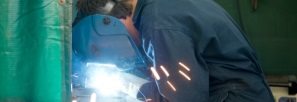
Personal Protective Equipment
Personal protective equipment (PPE) is worn to prevent injury and illnesses in the workplace. These injuries or illnesses can be a result of chemical, radiological, physical, or electrical contact. PPE protects the eyes, face, head, ears, feet, hands, arms, and the whole body. Protective equipment includes gloves, safety glasses, shoes, hard hats, body suits, masks, and vests. These resources cover OSHA standards for equipment and offer up best practices, guidelines, and sample policies for your use.
Disclaimer:
The information contained in this publication was obtained from sources believed to be reliable. LGRMS make no representations or guarantee as to the correctness or sufficiency of any information contained herein, nor a guarantee of results based upon the use of this information and disclaims all warranties expressed or implied regarding merchantability, fitness for use and fitness for a particular purpose. LGRMS does not warrant that reliance upon this document will prevent accident and losses or satisfy federal, state and local codes, ordinances and regulations. You assume the entire risk as to the use of this information.
|
|
PPE Hazard Assessment Guidelines
January 27, 2016
| Emory University
These guidelines provide instructions for performing and documenting personal protective equipment (PPE) hazard assessments along with guidance on appropriate PPE selection when hazards cannot be eliminated by engineering controls or administrative controls.
|
|
|
Sample PPE Policies
January 27, 2016
These sample policies and procedures include PPE hazard assessments, PPE selection, training, cleaning, maintenance, and safety discipline.
|
|
|
PPE Hazard Assessment Form
January 27, 2016
This hazard asssessment form addresses eye, face, head, hand, foot, torso, respiratory, noise, and fall protection.
|
|
|
The ABCDs of Fall Protection
January 27, 2016
| Capital Safety
The ABCDs of fall protection include Anchors, Body Support, Connectors, and Descent and Rescue.
|
|
|
PPE Trainer Course in Occupational Safety
January 27, 2016
| Georgia Tech Research Institute
This training presentation covers standard operating procedures for PPE, references to OSHA laws, and criteria for PPE selection.
|
|
|
Safety Self-Evaluation
January 27, 2016
| AgriTrust of Georgia
This series of checklists include a PPE checklist accounting for eye protection, an eye washing station, hearing protection, hand protection, and breathing respirators.
|
|
|
Personal Protective Equipment - Expert Article
March 7, 2016
| Robson Forensic
In this article, certified industrial hygienist, Ron Schaible, CIH, discusses Personal Protective Equipment (PPE) in the workplace, with an emphasis on the importance of establishing and complying with appropriate PPE protocols.
|
|
|
Assessing the Need for Personal Protective Equipment
January 27, 2016
| U.S. Department of Labor
This guide will help you to examine your workplace, review the work procedures you require your employees to follow, select appropriate PPE (except for respirators and insulating rubber equipment) to protect your employees, and teach your employees how to wear and care for the PPE you provide.
|
|
|
OSHA Compliant Personal Protective Equipment
January 27, 2016
| Federal Safety Solutions
This video covers assessing the workplace for hazards, reducing hazards before relying on PPE, and how employees need to be trained and informed about PPE policy and procedures. It also covers important areas of protections such as the eyes, hearing, and head.
|